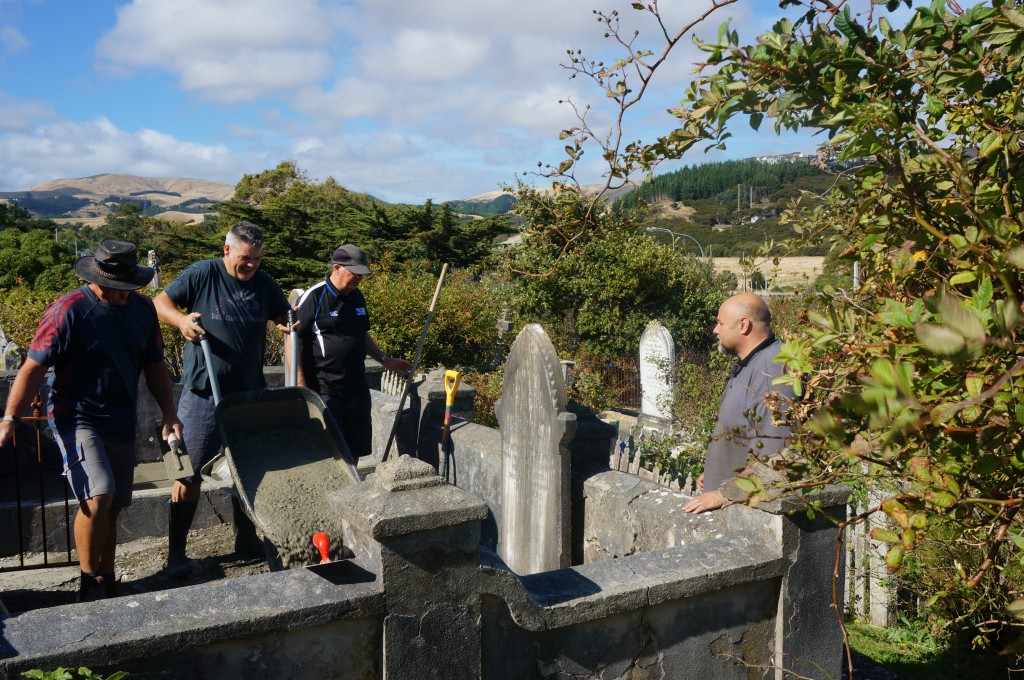Mens Breakfast
Time: 8:30 am May 6th at Pauatahanui
One of our local projects is to do repair work on the graves at the historic Pauatahanui cemetery. A good morning’s work to chip in with the community to look after our local area. Concrete and breakfast are provided (gold coin donation). Wheel barrows and shovels are handy to bring along.
 Some history for you!
Some history for you!
Thomas Hollis Stace originally donated the land to build a small Protestant chapel and establish a burial ground.
The first known interment in the Burial Ground was that of Maria Bradey, aged 26, in May 1860. She was the daughter of Francis Bradey, a member of one of the well-known pioneer families in the district. Maria’s grave is close to that of her brother and sister-in-law, Frederick and Agnes Mary Bradey. Their graves are marked by a white marble angel and this can be found near the entrance to the burial ground. Maria’s grave is enclosed in the wooden picket fence to the right of the angel.
- William Blackey who built the chapel
- Sarah-Ann Jones, the first European women immigrant to step ashore in Petone in 1840
- Helen Walker whose husband farmed the Ngati Toa Domain land and who died in 1897 aged 100
- two brothers who were tragically drowned crossing the bar to Porirua Harbour in 1928, and;
- children, often several to a family, who died in infancy.
The cemetery continued to service the community even after the chapel had closed its doors. By the 1930s only a few vacant plots remained in the original area. At that time, additional land around St Alban’s was consecrated for burial.